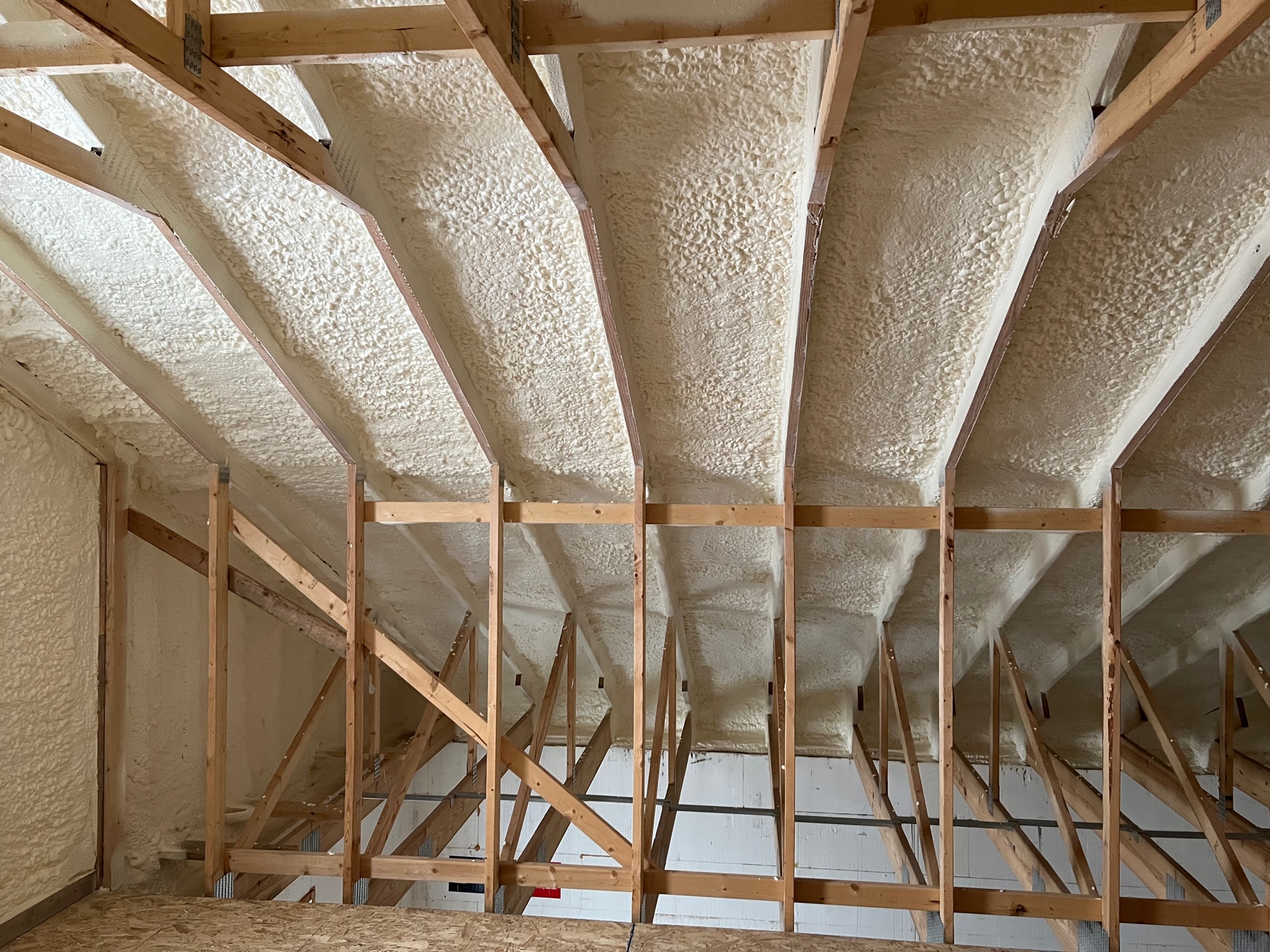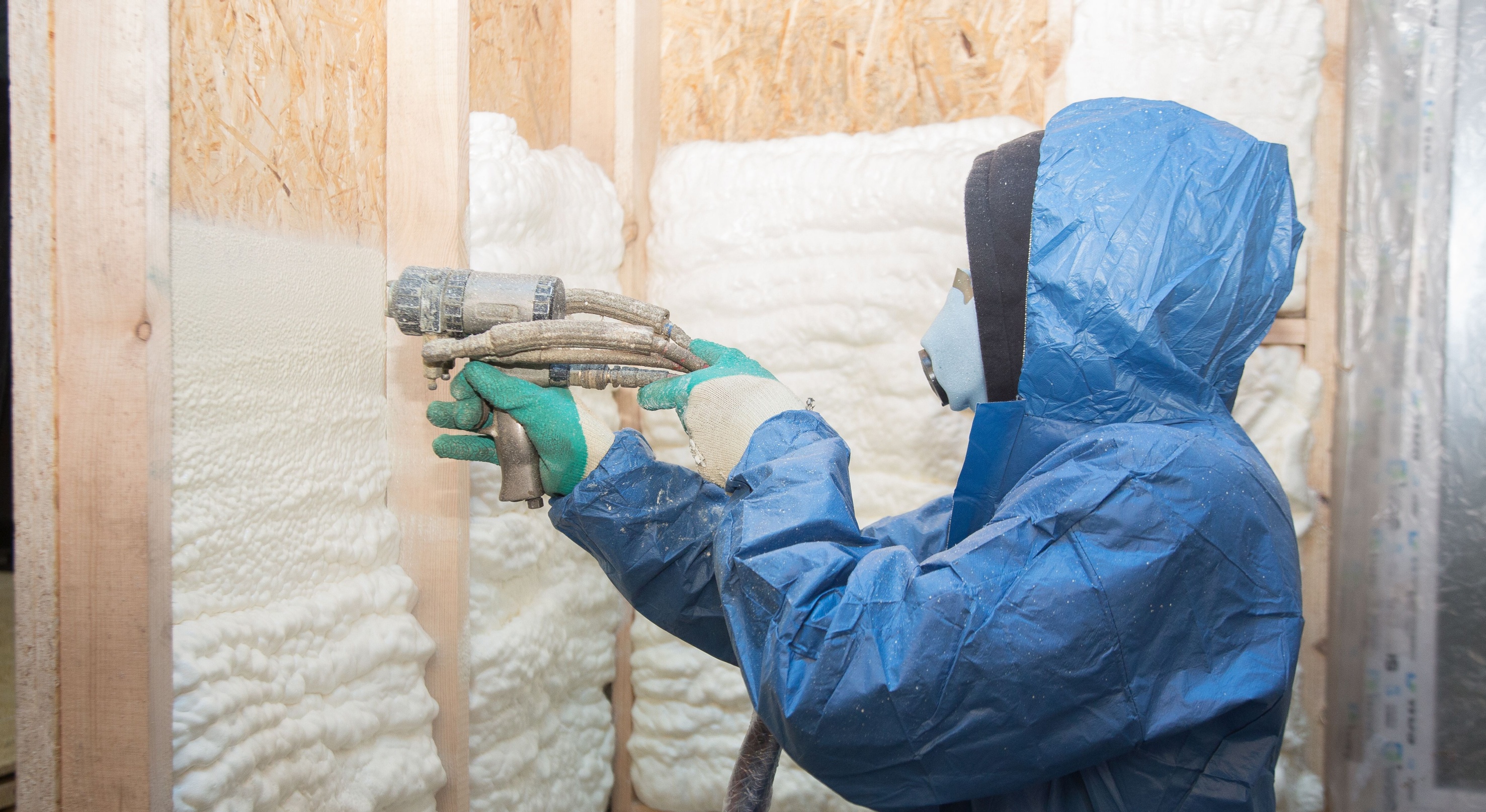Spray Foam: The Ultimate Remedy for Air Sealing and Insulation
Spray foam insulation has arised as a leading option for reliable air securing and thermal insulation, providing an unique mix of properties that set it besides traditional techniques. Its ability to increase and fill up voids makes it especially effective in protecting against air leak, which can significantly affect power performance. Understanding the full scope of its benefits, setup procedures, and contrasts with other insulation kinds is crucial for making informed choices. As we explore these elements, the effects for both brand-new buildings and retrofits come to be increasingly considerable. What elements should affect your selection?
What Is Spray Foam?
Spray foam is a versatile insulation product that integrates the concepts of air sealing and thermal resistance to improve power performance in structures. Composed mostly of polyurethane or various other similar substances, spray foam is applied as a liquid that broadens upon call with surfaces, creating a solid, continuous layer of insulation. This unique residential property allows it to fill up voids, cracks, and gaps that traditional insulation products might forget, offering a premium air seal.
There are 2 major types of spray foam: open-cell and closed-cell. Open-cell spray foam is lighter and extra versatile, providing excellent audio absorption and a lower R-value per inch - Spray Foam. On the other hand, closed-cell spray foam is denser, offering a higher R-value, moisture resistance, and added architectural integrity to developing parts
The application procedure usually involves specific devices, guaranteeing a seamless application that sticks to numerous substrates, including metal, wood, and concrete. This flexibility makes spray foam ideal for both new buildings and retrofitting existing frameworks. Its capability to create an impermeable barrier significantly adds to reducing energy consumption and boosting indoor air top quality, thus making it a preferred choice among property owners and building contractors alike.
Benefits of Spray Foam Insulation
Among the most considerable advantages of spray foam insulation is its remarkable capability to create a constant air obstacle, which properly decreases power loss. Unlike standard insulation products, spray foam increases to fill up voids and cracks, making certain that air leak is drastically reduced. This particular not just enhances energy effectiveness but likewise leads to reduce energy costs with time.
Furthermore, spray foam insulation supplies exceptional thermal resistance, adding to a more secure interior atmosphere. Its high R-value per inch permits effective insulation in confined rooms, making it excellent for attics, wall surfaces, and crawl spaces. Furthermore, the moisture-resistant buildings of spray foam help prevent mold and mold growth, promoting healthier living conditions.
An additional important benefit of spray foam insulation is its sound-dampening high qualities (Spray Foam). It properly minimizes sound transmission in between rooms, developing a quieter and extra comfortable home environment. The sturdiness of spray foam additionally attracts attention, as it does not droop or settle over time, keeping its efficiency throughout its life expectancy
Exactly How Spray Foam Works
Understanding exactly how spray foam insulation works is vital for valuing its efficiency in air securing and thermal resistance. Spray foam insulation contains two primary elements: isocyanate and polyol material. When these elements are blended, they undergo a you could try this out chemical response that triggers the material to broaden quickly, creating a thick foam that fills up fractures, voids, and tooth cavities.
As the foam expands, it complies with surfaces, forming an airtight seal that significantly decreases air seepage. This particular makes spray read review foam insulation extremely effective at avoiding drafts and moisture infiltration, which can bring about energy loss and damage in time. Additionally, the closed-cell version of spray foam uses exceptional thermal resistance due to its stiff structure, efficiently minimizing warmth transfer.
The distinct homes of spray foam allow it to comply with uneven surfaces, making certain thorough coverage and a seamless obstacle. Consequently, spray foam insulation not only boosts energy efficiency but additionally adds to improved interior air quality by decreasing the build-up of pollutants and allergens. Inevitably, recognizing the technicians behind spray foam underscores its role as a superior selection for insulation and air securing in both commercial and domestic applications.
Setup Refine Review

Before installation, the space has to be adequately cleaned up and prepped, making certain that surfaces are free from dampness, dust, and particles. Since contaminants can jeopardize adhesion and overall efficiency, this step is important. When the location is prepared, the application involves mixing the two elements of the spray foam, which increases upon call and fills gaps effectively.
Trained experts must carry out the setup, using specific equipment to make sure consistent insurance coverage and optimum thickness. Safety and security preventative measures, consisting of putting on protective equipment and making sure appropriate ventilation, are vital during this process. After application, the foam normally cures rapidly, forming a solid obstacle that improves energy performance.
Contrasting Spray Foam to Standard Insulation
When assessing insulation alternatives, spray foam insulation stands out in contrast to typical materials such as get more fiberglass and cellulose. Unlike fiberglass and cellulose, which can enable air infiltration, spray foam broadens upon application, loading crevices and voids to produce a closed seal.
In addition, spray foam provides a greater R-value per inch than traditional insulation kinds, using even more efficient thermal resistance in a thinner profile. This particular is specifically valuable precede with limited tooth cavity depth. Spray foam is immune to wetness and mold development, which can be a substantial problem with cellulose and fiberglass, specifically in humid settings.
However, spray foam insulation usually lugs a greater in advance expense than its typical counterparts. Property owners should weigh this preliminary investment against long-lasting energy savings and performance advantages. Ultimately, while both insulation kinds offer their objective, spray foam arises as a much more advanced remedy for contemporary insulation demands, specifically in regards to air securing and thermal efficiency.

Conclusion
In summary, spray foam insulation stands for a highly efficient option for attaining optimal air securing and thermal resistance. Its one-of-a-kind residential properties, including wetness resistance and audio dampening, make it appropriate for various applications in both new building and constructions and retrofitting projects (Spray Foam). Although the initial prices might be higher contrasted to standard insulation products, the long-term benefits, such as significant energy financial savings and improved indoor air top quality, validate the financial investment and underscore its worth in modern structure techniques.
Spray foam insulation has arised as a leading solution for reliable air securing and thermal insulation, supplying a special mix of residential or commercial properties that set it apart from traditional approaches.Spray foam is a flexible insulation material that combines the concepts of air securing and thermal resistance to improve power efficiency in buildings.When evaluating insulation choices, spray foam insulation stands out in comparison to traditional products such as fiberglass and cellulose. Ultimately, while both insulation kinds serve their objective, spray foam emerges as a more advanced solution for contemporary insulation requirements, particularly in terms of air securing and thermal performance.
In summary, spray foam insulation represents a highly effective service for achieving optimum air securing and thermal resistance.